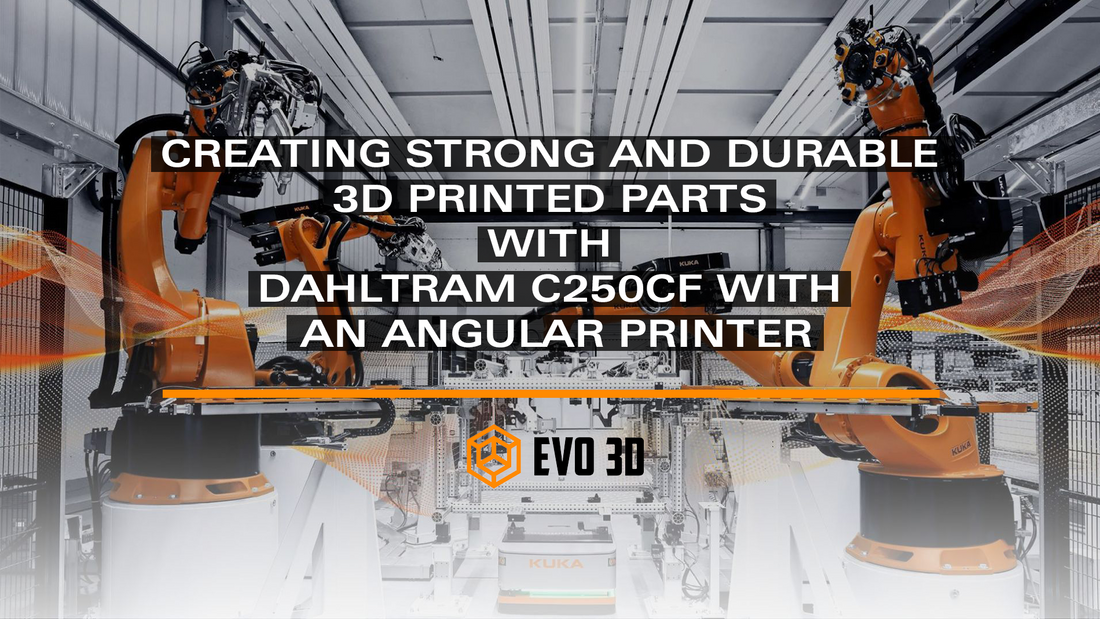Creating Strong and Durable 3D Printed Parts with Dahltram C250CF with a Angular Printer

This week here at EVO3D we have been creating a new pellet profile for the Pulsar Extruder on our Kuka robotic arm, printing Airtech’s Dahltram C-250CF polycarbonate carbon fibre material. Using Angular slicing to be able to print complex shapes in near mid-air.
Angular slicing involves slicing a 3D model into multiple layers, each with a different orientation. This technique is used to improve the strength and durability of the printed object. By changing the orientation of each layer, the printed part is able to resist stresses and forces in multiple directions, resulting in a stronger, more durable part.
Non-planar 3D printing, on the other hand, allows for the creation of more complex and organic shapes. In traditional 3D printing, objects are printed layer by layer in a flat, planar orientation. With non-planar 3D printing, however, the printer head can move in multiple directions, allowing for more complex shapes to be printed. This technique is particularly useful when printing objects with intricate curves, angles, or overhangs, which may be difficult or impossible to print with traditional planar techniques.
When combined, angular slicing and non-planar 3D printing allow for the creation of complex, strong, and durable parts that are able to resist stresses and forces in multiple directions. The printer head can move in multiple directions, allowing for the creation of complex geometries, while angular slicing ensures that each layer of the printed part is oriented in a way that maximizes strength and durability.
Incorporating a polycarbonate carbon fibre mix into the printing process adds another layer of strength and durability, making the final printed part even stronger and more resilient. The resulting parts are ideal for use in applications where strength and durability are critical, C-250CF being designed for rapid prototyping, trim tools, holding fixtures, low temperature master models, forming tools and low temperature moulds.
With the flexibility of printing non-planar with materials such as C250CF, rapid tooling production such as moulds can be made in a fraction of the time it would take traditional techniques. With post processing of the mould via milling back down to the required dimensions this can be done all in house in rapid time to get production up and running.
